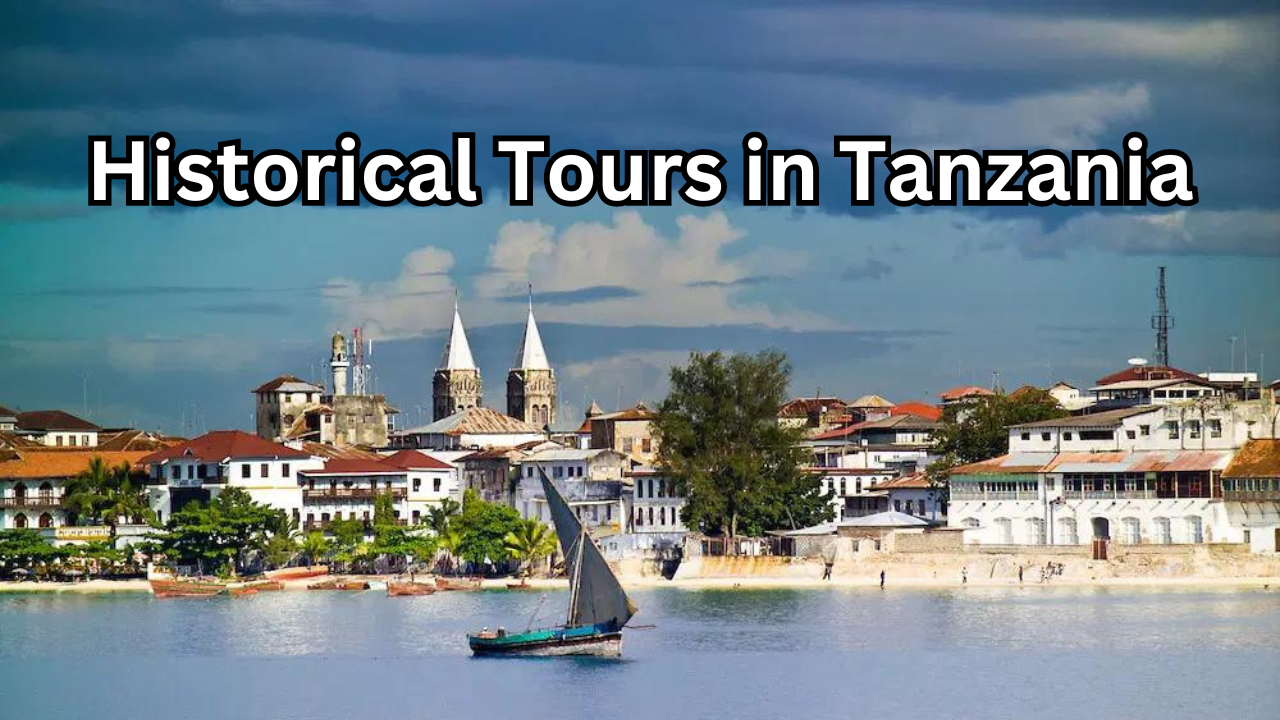Table of Contents
Introduction
Tanzania, nestled in East Africa, boasts a tapestry of cultural and historical treasures that span millennia. From ancient civilizations to colonial influences, the country’s historical tours offer a captivating journey through time. Each site tells a unique story, revealing the rich tapestry of Tanzania’s past and its enduring cultural heritage. Exploring these historical tours not only unveils the architectural marvels and archaeological wonders but also provides insights into the diverse communities that have shaped Tanzania’s identity. Join us as we embark on a journey to uncover the vibrant history and heritage of Tanzania through its remarkable historical tours.
Overview of Tanzania’s Rich Cultural and Historical Heritage
Tanzania, situated in East Africa, is celebrated for its diverse cultural tapestry and deep historical roots. Home to over 120 ethnic groups, each with its own traditions and languages, Tanzania’s cultural richness is a testament to centuries of interactions and exchanges. From the coastal Swahili culture influenced by Arab traders to the Maasai pastoralists of the interior, Tanzania’s heritage is as varied as it is vibrant.
Historically, Tanzania has been a crossroads of trade routes connecting Africa with the Middle East and beyond. This has left a legacy of ancient cities, trading posts, and archaeological sites that provide windows into the region’s past. The country’s landscapes—from the shores of Zanzibar’s Stone Town to the vast plains of the Serengeti—have witnessed the rise and fall of kingdoms, the arrival of explorers and traders, and the struggles for independence and nationhood.
Importance of Historical Tours in Understanding Tanzania’s Past
Historical tours in Tanzania offer invaluable insights into the country’s past, allowing visitors to connect with its history in a tangible and immersive way. These tours provide opportunities to explore ancient ruins, visit museums filled with artifacts, and walk through towns and cities steeped in history. By experiencing Tanzania’s historical sites firsthand, visitors gain a deeper appreciation for the diverse cultures that have shaped the country over time.
Moreover, historical tours help preserve Tanzania’s cultural heritage by raising awareness and fostering a sense of pride among local communities. They contribute to the conservation of historical sites and support efforts to educate future generations about their heritage. For travelers, these tours offer not just a glimpse into the past but also a chance to understand the complexities of Tanzania’s present-day society, rooted in its rich historical and cultural legacies.
Stone Town, Zanzibar
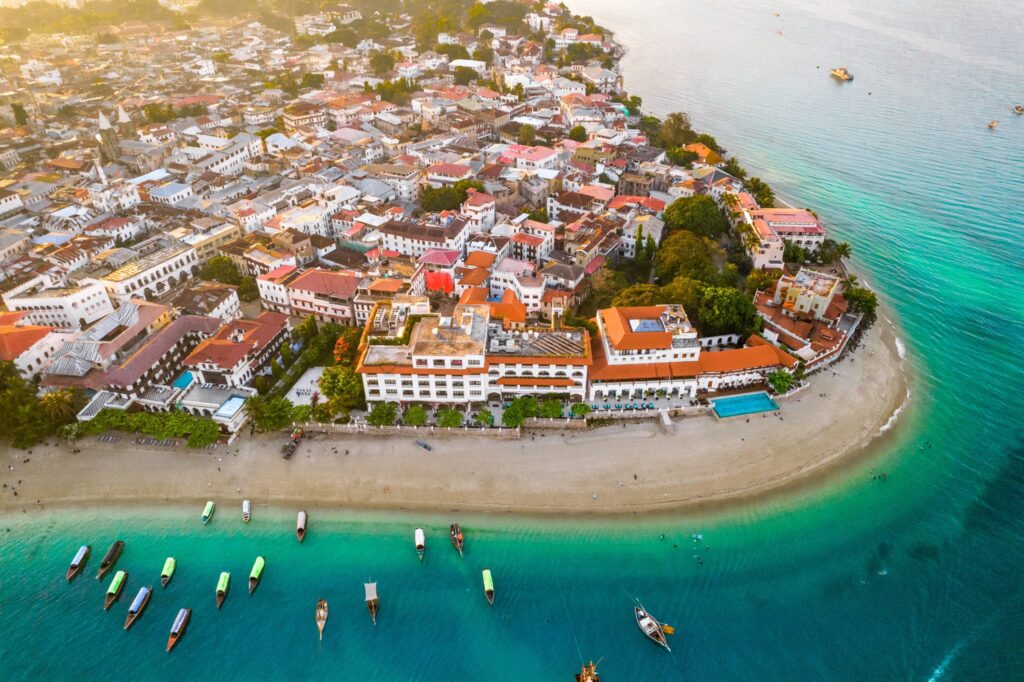
Location: Zanzibar Island, Tanzania.
Stone Town, located on the western coast of Zanzibar Island, is a UNESCO World Heritage site renowned for its well-preserved Swahili and Arab architecture. This historic town is the cultural heart of Zanzibar and reflects its diverse past as a major trading hub in the Indian Ocean. The name “Stone Town” derives from the coral stone buildings that line its narrow streets and waterfront.
As the old capital of the Zanzibar Sultanate, Stone Town flourished during the 19th century, attracting traders from Arabia, Persia, India, and Europe. The architecture of Stone Town is a blend of African, Arab, Persian, Indian, and European influences, characterized by intricately carved wooden doors, balconies, and verandas adorned with ornate details.
Today, Stone Town remains a vibrant center of culture and history, with bustling markets, lively squares, and landmarks such as the House of Wonders, the Old Fort, and the Sultan’s Palace Museum. It offers visitors a glimpse into Zanzibar’s rich heritage, providing a unique opportunity to explore its winding alleyways and immerse themselves in its storied past.
Description: UNESCO World Heritage site known for its Swahili and Arab architecture.
Stone Town in Zanzibar, designated as a UNESCO World Heritage site, stands as a testament to the cultural fusion that defines the region. Its architecture blends Swahili and Arab influences, showcasing a unique style shaped by centuries of trade and cultural exchange in the Indian Ocean.
Highlights: Narrow streets, historic buildings like the House of Wonders, and vibrant markets.
Narrow, winding streets characterize Stone Town, inviting visitors to explore its labyrinthine alleys lined with ancient coral stone buildings. Each corner reveals historic treasures such as the House of Wonders, a grand palace that once housed the Sultan’s ceremonial court and is now a museum showcasing Zanzibar’s cultural history. Vibrant markets bustle with activity, offering spices, crafts, and local delicacies that reflect the island’s rich culinary traditions and mercantile heritage.
Kilwa Kisiwani
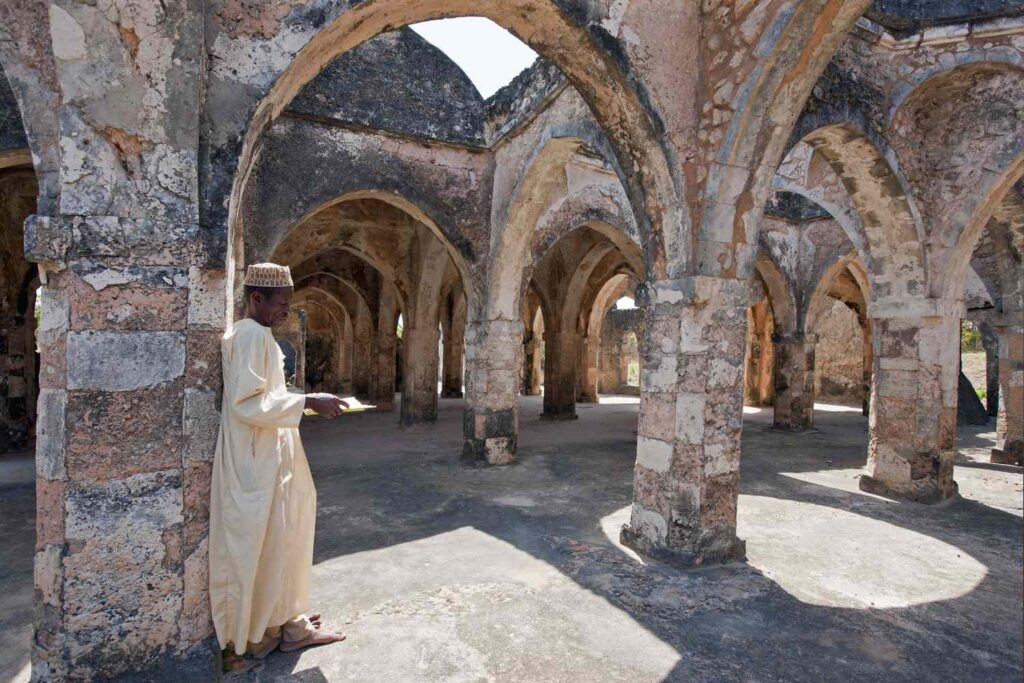
Location: Island off the southern coast of Tanzania.
Kilwa Kisiwani, situated on an island just off the southern coast of Tanzania, is a remarkable archaeological site that offers a glimpse into East Africa’s rich history. This island was once a thriving Swahili city-state and an important trading center along the Indian Ocean coast. It reached its zenith during the 13th to 15th centuries, when it played a crucial role in the gold trade with Zimbabwe and the ivory and slave trade with the Arabian Peninsula.
The ruins of Kilwa Kisiwani include impressive structures such as mosques, a palace complex, and numerous tombs, all built from coral rag and lime mortar. These architectural remnants provide valuable insights into the city-state’s prosperity and its cultural and economic connections with the wider Indian Ocean world.
Today, Kilwa Kisiwani is recognized as a UNESCO World Heritage site, attracting visitors interested in exploring its historical significance and marveling at its well-preserved archaeological treasures. Accessible by boat, this island offers a serene setting where visitors can wander among the ruins and imagine the bustling maritime activity that once defined this ancient trading hub.
Description: Ancient Swahili trading town and UNESCO World Heritage site.
Kilwa Kisiwani, located on an island off the southern coast of Tanzania, stands as a testament to the region’s rich history as a vibrant Swahili trading town. Designated as a UNESCO World Heritage site, Kilwa Kisiwani flourished from the 9th to the 19th century, serving as a pivotal hub for trade across the Indian Ocean.
Highlights: Ruins of mosques, palaces, and trading posts dating back to the 9th century.
The ruins of Kilwa Kisiwani showcase the architectural splendor of its heyday, featuring mosques with intricate designs, remnants of a royal palace complex, and well-preserved trading posts. These structures, constructed from coral stone and adorned with decorative elements, offer a glimpse into the city-state’s economic prosperity and cultural sophistication during its zenith.
Visitors to Kilwa Kisiwani can explore these archaeological remains, marvel at the craftsmanship of Swahili architecture, and contemplate the city-state’s role in the broader network of trade and cultural exchange that characterized the Indian Ocean region in medieval times.
Bagamoyo
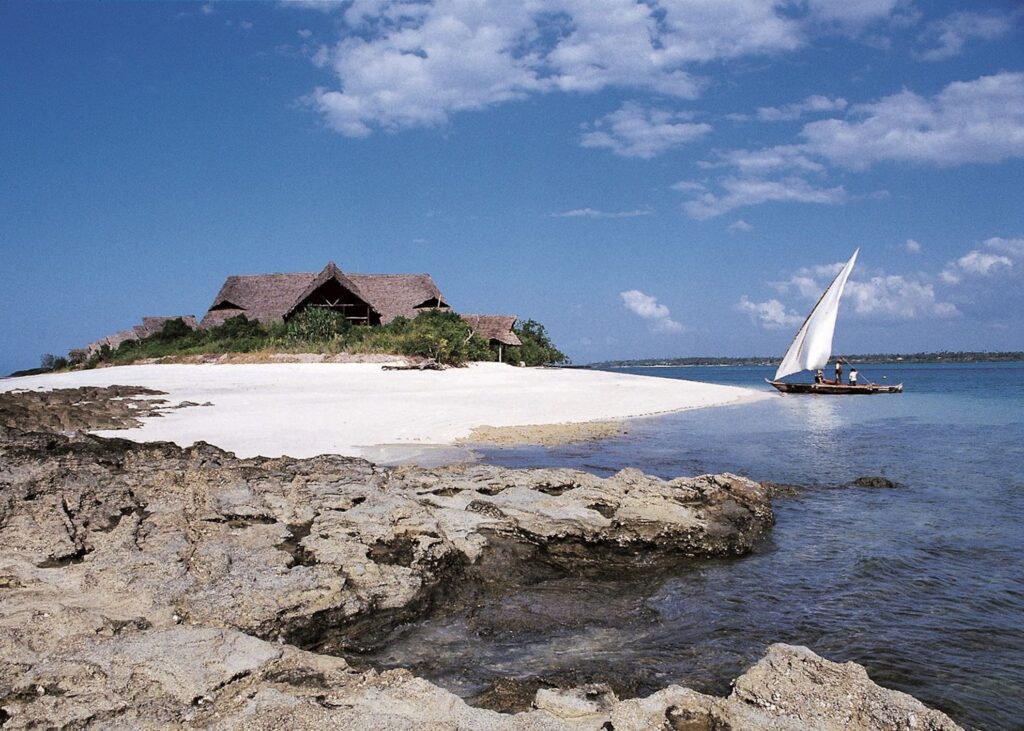
Location: Mainland Tanzania, north of Dar es Salaam.
Bagamoyo, situated on the mainland coast of Tanzania, north of Dar es Salaam, holds significant historical and cultural importance. The name Bagamoyo, derived from the Swahili words for “lay down your heart,” reflects its role as a departure point for captured slaves during the East African slave trade era.
Historically, Bagamoyo was a hub for traders, explorers, and missionaries, serving as a gateway to the interior of East Africa. It was also a focal point for German colonial administration in the late 19th century, briefly serving as the capital of German East Africa.
Today, Bagamoyo preserves remnants of its storied past through historical sites, including old mosques, churches, and colonial-era buildings. Visitors can explore the Caravan Serai museum, which documents the town’s history and its role in the slave trade, as well as the German Boma, a former administrative building now housing exhibits on German colonial rule.
Bagamoyo’s coastal charm, combined with its rich historical legacy, makes it a compelling destination for travelers seeking to delve into Tanzania’s complex history and cultural heritage.
Description: Historic port town with ties to the slave trade and German colonial era.
Bagamoyo, located on the mainland coast of Tanzania north of Dar es Salaam, is a town steeped in history, reflecting its pivotal role in both the East African slave trade and the German colonial period. Its Swahili name translates to “lay down your heart,” evoking the emotions of those departing for uncertain futures during the slave trade.
Highlights: Slave trade history, German architecture, Caravan Serai museum.
Bagamoyo’s history is deeply intertwined with the transatlantic and Indian Ocean slave trades. Visitors can explore remnants of this dark past through historical sites such as the Kaole Ruins and the Bagamoyo Historical Museum. The town also features German colonial architecture, including the Old Boma, which served as a German administrative center.
The Caravan Serai museum provides a poignant glimpse into Bagamoyo’s role as a pivotal point in the East African slave trade. Here, exhibits and artifacts offer insight into the harrowing experiences of enslaved individuals and the impact of this trade on East African societies. Bagamoyo’s blend of cultures, from its Swahili roots to its German colonial heritage, makes it a compelling destination for travelers interested in exploring Tanzania’s complex history and cultural tapestry.
Olduvai Gorge
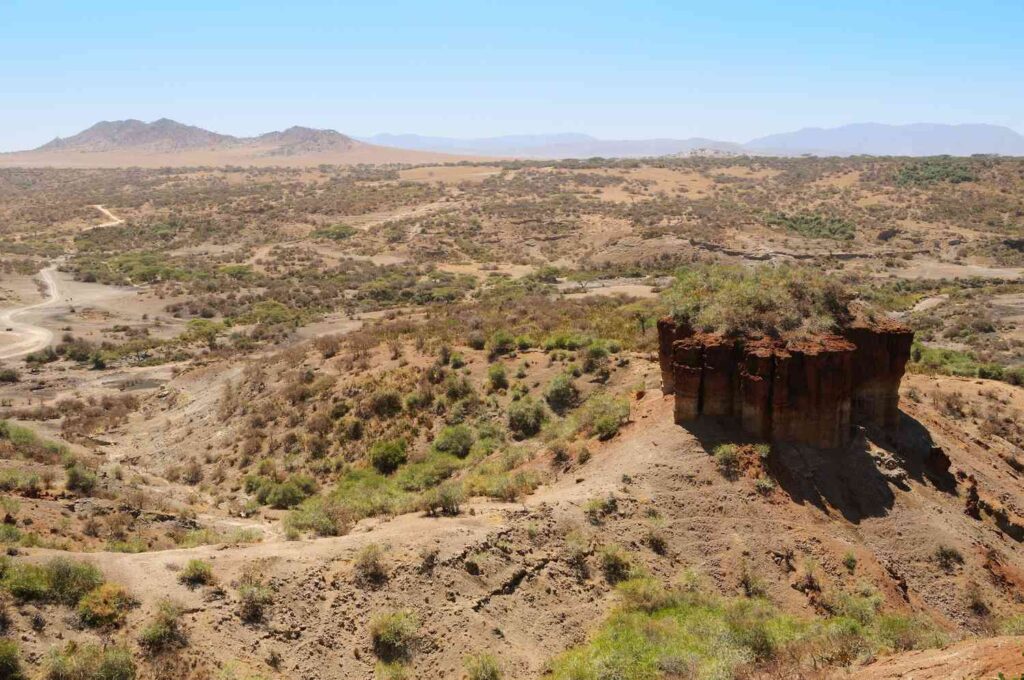
Location: Great Rift Valley, northern Tanzania.
Olduvai Gorge, situated in the Great Rift Valley of northern Tanzania, is one of the world’s most significant archaeological sites. It gained prominence for its discoveries related to early human evolution and prehistoric culture.
This site has yielded fossils, tools, and artifacts dating back millions of years, offering invaluable insights into the development of early humans. Excavations conducted by prominent archaeologists such as Mary and Louis Leakey have unearthed remains of some of the earliest known human ancestors, including Australopithecus and Homo habilis.
Today, Olduvai Gorge remains a focal point for researchers and visitors interested in human origins and evolutionary history. The site includes a museum that showcases important discoveries and provides educational exhibits on the geological and archaeological significance of the area.
Visitors to Olduvai Gorge can take guided tours to explore excavation sites and learn about the scientific discoveries that have shaped our understanding of human evolution. Its location within the stunning landscape of the Great Rift Valley adds to its allure, offering a glimpse into both ancient history and the natural beauty of northern Tanzania.
Description: Archaeological site known for early human fossil discoveries.
Olduvai Gorge, nestled within the Great Rift Valley of northern Tanzania, is renowned worldwide for its profound contributions to the understanding of human evolution. This archaeological treasure trove has yielded fossilized remains, tools, and artifacts dating back over two million years, offering critical insights into the development of early humans.
Highlights: Museum exhibits, guided tours of excavation sites.
Visitors to Olduvai Gorge can explore its rich history through museum exhibits that showcase significant discoveries and illustrate the geological and archaeological context of the site. The museum provides a comprehensive overview of the fossil findings and their implications for our understanding of human ancestry.
Guided tours of the excavation sites offer a firsthand experience of the ongoing scientific research and exploration at Olduvai Gorge. Knowledgeable guides lead visitors through the rugged terrain, explaining the significance of each discovery and sharing stories of the pioneering archaeologists who unearthed them.
For those interested in anthropology, archaeology, and the origins of humanity, Olduvai Gorge stands as a must-visit destination, where the ancient past comes to life amid the breathtaking landscapes of Tanzania’s Great Rift Valley.
Museum of Tanzanian History, Dar es Salaam
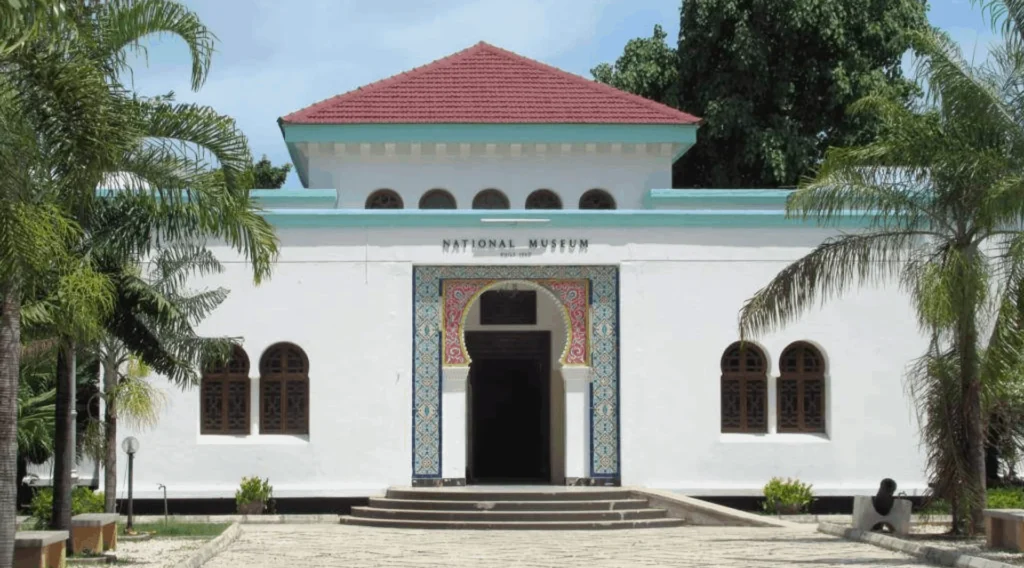
Location: Dar es Salaam, Tanzania.
The Museum of Tanzanian History in Dar es Salaam serves as a cultural beacon, preserving and showcasing the diverse history and heritage of Tanzania. Located in the bustling city of Dar es Salaam, the museum offers visitors a comprehensive journey through the country’s past, from ancient civilizations to colonial times and beyond.
Established to educate and inspire, the museum houses a vast collection of artifacts, archaeological finds, and cultural exhibits that chronicle Tanzania’s rich tapestry of traditions, languages, and historical milestones. Visitors can explore displays that highlight the region’s prehistoric origins, the development of Swahili civilization along the coast, and the impact of European explorers and colonial powers.
The museum’s exhibits are thoughtfully curated to provide insights into the cultural diversity and resilience of Tanzania’s people throughout history. They offer a glimpse into traditional practices, artistic expressions, and the socio-political changes that have shaped the nation into what it is today.
For travelers and history enthusiasts alike, the Museum of Tanzanian History in Dar es Salaam offers a compelling opportunity to delve deep into the country’s fascinating past, fostering a deeper appreciation for its cultural heritage and societal evolution.
Description: Museum showcasing Tanzania’s history through artifacts and exhibits.
The Museum of Tanzanian History in Dar es Salaam is a distinguished institution dedicated to preserving and presenting Tanzania’s rich and diverse history. Located in the vibrant city of Dar es Salaam, the museum offers a comprehensive narrative through its extensive collection of artifacts and exhibits.
Highlights: Archaeological finds, traditional art, cultural displays.
Visitors to the museum can explore a wide range of highlights that illuminate Tanzania’s cultural and historical evolution. The museum features archaeological finds that span millennia, showcasing tools, pottery, and relics from ancient civilizations that once thrived in the region. These artifacts provide valuable insights into early human settlement and trade networks in East Africa.
Traditional art exhibits celebrate Tanzania’s artistic heritage, displaying intricate carvings, textiles, and ceremonial objects crafted by various ethnic groups across the country. Cultural displays offer a glimpse into daily life, customs, and traditions practiced by Tanzanian communities throughout history, highlighting the continuity and adaptation of cultural practices over time.
Through its curated exhibits and educational programs, the Museum of Tanzanian History invites visitors to embark on a journey of discovery, gaining a deeper understanding and appreciation for the rich tapestry of Tanzania’s past and its enduring cultural legacy.
Engaruka Archaeological Site
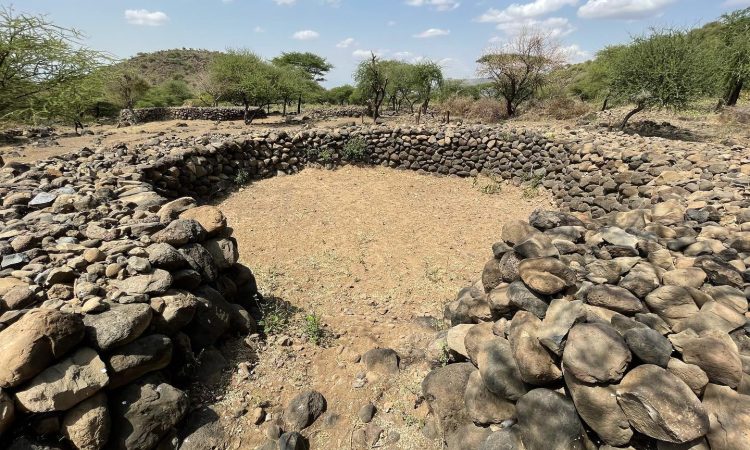
Location: Near Lake Natron, northern Tanzania.
The Engaruka Archaeological Site, situated near Lake Natron in northern Tanzania, is a testament to ancient agricultural ingenuity and urban planning. This site, dating back to the 15th century, reveals the remnants of a sophisticated irrigation system and agricultural terraces that supported a thriving community.
The ruins at Engaruka offer insights into early settlement patterns and agricultural practices in East Africa. The site features stone-walled terraces and channels that were meticulously engineered to capture and distribute water from nearby rivers and streams for cultivation. These agricultural innovations allowed the inhabitants to sustainably farm crops such as millet, sorghum, and beans in an otherwise arid environment.
Today, the Engaruka Archaeological Site provides visitors with an opportunity to explore the remnants of this ancient civilization. Guided tours offer interpretations of the site’s history and its significance in understanding the development of early agricultural societies in the region. The surrounding landscape, characterized by the dramatic scenery of northern Tanzania and the proximity to Lake Natron, adds to the allure of Engaruka as a destination for history enthusiasts and those interested in ancient civilizations.
Visiting Engaruka offers a glimpse into the innovative spirit and resilience of early communities in East Africa, showcasing their ability to adapt to challenging environmental conditions and thrive through ingenuity and resourcefulness.
Description: Ancient ruins with agricultural terraces and irrigation systems.
The Engaruka Archaeological Site, located near Lake Natron in northern Tanzania, is renowned for its well-preserved ancient ruins that showcase early agricultural innovations. Dating back to the 15th century, Engaruka offers a glimpse into the advanced urban planning and agricultural practices of its time.
Highlights: Historical insights into early settlement and agricultural practices.
Visitors to Engaruka can explore stone-walled terraces and intricate irrigation channels that reflect the ingenuity of the ancient inhabitants. These agricultural features were designed to maximize water efficiency and support sustainable farming in a semi-arid environment. The site provides valuable historical insights into early settlement patterns, social organization, and the development of agricultural techniques in East Africa.
Guided tours of Engaruka offer interpretive perspectives on the site’s significance, providing context for the archaeological discoveries and their implications for understanding the region’s ancient civilizations. The surrounding natural beauty of northern Tanzania, with its rugged landscapes and proximity to Lake Natron, enhances the experience of exploring Engaruka’s historical and cultural heritage.
Engaruka stands as a testament to the innovative spirit and adaptive strategies of early societies, offering a compelling destination for travelers interested in ancient history, archaeology, and the development of agricultural civilizations in Africa.
German Boma, Tanga
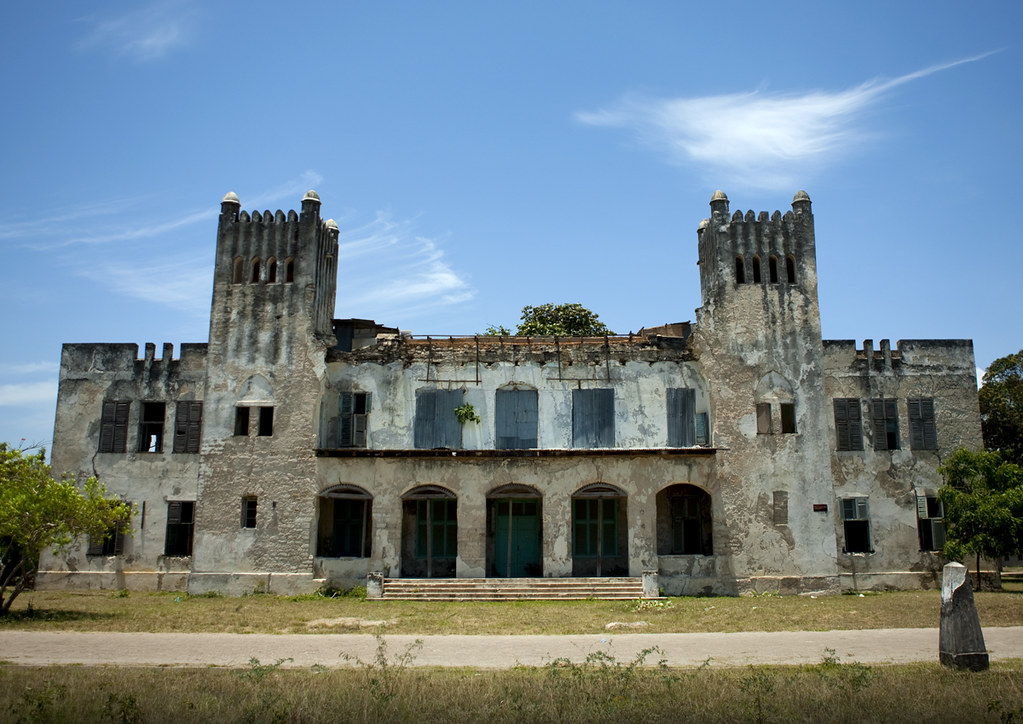
Location: Tanga, northern Tanzania.
The German Boma in Tanga is a significant historical landmark that reflects Tanzania’s colonial past under German rule. Located in the coastal city of Tanga, this “boma” (fortified enclosure) served as a center of administration and governance during the late 19th and early 20th centuries.
Under German colonial rule, Tanga played a strategic role as a port and trading hub in East Africa. The German Boma in Tanga exemplifies the architectural style of the period, characterized by its solid construction, thick walls, and distinctive design elements. It served as a focal point for German officials overseeing administrative affairs, trade relations, and military operations in the region.
Today, the German Boma in Tanga stands as a museum and cultural center, offering visitors insights into Tanzania’s colonial history and the impact of European colonization on local communities. The museum exhibits artifacts, photographs, and historical documents that chronicle Tanga’s role during the German colonial era, highlighting the interactions between German settlers, local inhabitants, and the broader geopolitical context of East Africa at the time.
Visiting the German Boma provides an opportunity to delve into Tanzania’s colonial heritage, offering a glimpse into the complex dynamics of power, culture, and resistance that shaped the region’s history. The scenic coastal setting of Tanga further enhances the experience, making it a compelling destination for history enthusiasts and travelers interested in exploring Tanzania’s diverse cultural tapestry.
Description: Colonial-era administrative building and museum.
The German Boma in Tanga, located in northern Tanzania, is a distinguished colonial-era administrative building that now serves as a museum and cultural landmark. Built during the late 19th century under German colonial rule, the Boma represents a significant architectural and historical symbol of Tanzania’s colonial past.
Highlights: German colonial history, architecture, cultural artifacts.
The German Boma museum offers visitors a compelling journey through Tanzania’s colonial history, focusing on the period when Germany controlled much of East Africa. Exhibits within the Boma showcase artifacts, photographs, and documents that illuminate the daily life, governance, and cultural interactions during this era. The museum provides insights into the administrative functions of the Boma, its role in trade and infrastructure development, and the impact of German colonization on local communities.
Architecturally, the German Boma is characterized by its solid construction, imposing facade, and strategic location overlooking the Indian Ocean. The building’s design reflects German colonial architectural influences, blending European elements with local materials and craftsmanship.
Visiting the German Boma in Tanga offers a deeper understanding of Tanzania’s colonial heritage, highlighting both the challenges and legacies of European colonization in East Africa. The museum’s cultural artifacts and historical exhibits provide a nuanced perspective on the complex dynamics of power, identity, and cultural exchange that shaped the region’s history.
Chole Island, Mafia
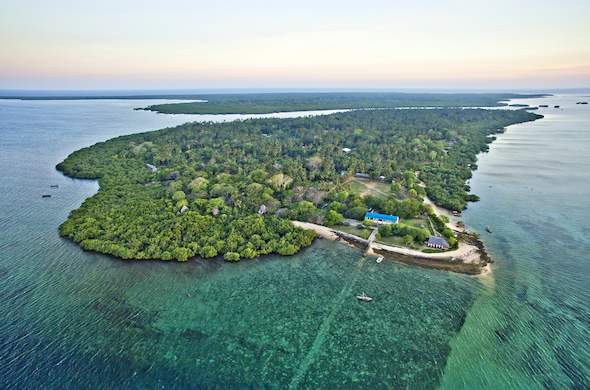
Location: Mafia Island, Tanzania.
Chole Island, situated off the coast of Mafia Island in Tanzania, is steeped in history and cultural significance. This small island is part of the Mafia Archipelago, known for its pristine beaches, coral reefs, and historical landmarks.
Chole Island boasts a rich heritage dating back centuries, shaped by its strategic location along ancient trade routes in the Indian Ocean. The island was once a bustling center of commerce and cultural exchange, frequented by Arab traders and later European explorers. Today, remnants of its storied past can be explored through its historical sites and archaeological treasures.
Visitors to Chole Island can discover ruins of ancient settlements and forts that offer glimpses into its role as a trading hub and maritime center. The island’s cultural landscape is enriched by Swahili influences, evident in its architecture, cuisine, and traditions preserved by local communities.
Surrounded by the turquoise waters of the Indian Ocean, Chole Island also serves as a gateway to Mafia Island Marine Park, renowned for its diverse marine life and coral reefs. The island’s natural beauty and historical allure make it a captivating destination for travelers seeking both relaxation and cultural exploration in Tanzania’s coastal paradise.
Description: Historical island with ruins of ancient settlements and forts.
Chole Island, located off the coast of Mafia Island in Tanzania, is an intriguing historical site adorned with remnants of ancient settlements and forts. This island, part of the Mafia Archipelago, holds cultural significance dating back centuries, enriched by its strategic position along ancient trade routes in the Indian Ocean.
Highlights: Historical trading networks, Swahili culture, archaeological discoveries.
Visitors to Chole Island can explore the ruins of ancient settlements and forts, which offer insights into its vibrant past as a bustling center of trade and cultural exchange. These archaeological discoveries provide glimpses into the island’s role in historical trading networks, where goods and ideas flowed between East Africa, Arabia, and beyond.
Chole Island’s cultural landscape reflects Swahili influences, evident in its architecture, artifacts, and traditions preserved by local communities. The island’s historical allure is further enhanced by its natural beauty and tranquil surroundings, making it a captivating destination for travelers interested in exploring Tanzania’s rich maritime history and coastal heritage.
Sultan’s Palace Museum, Zanzibar
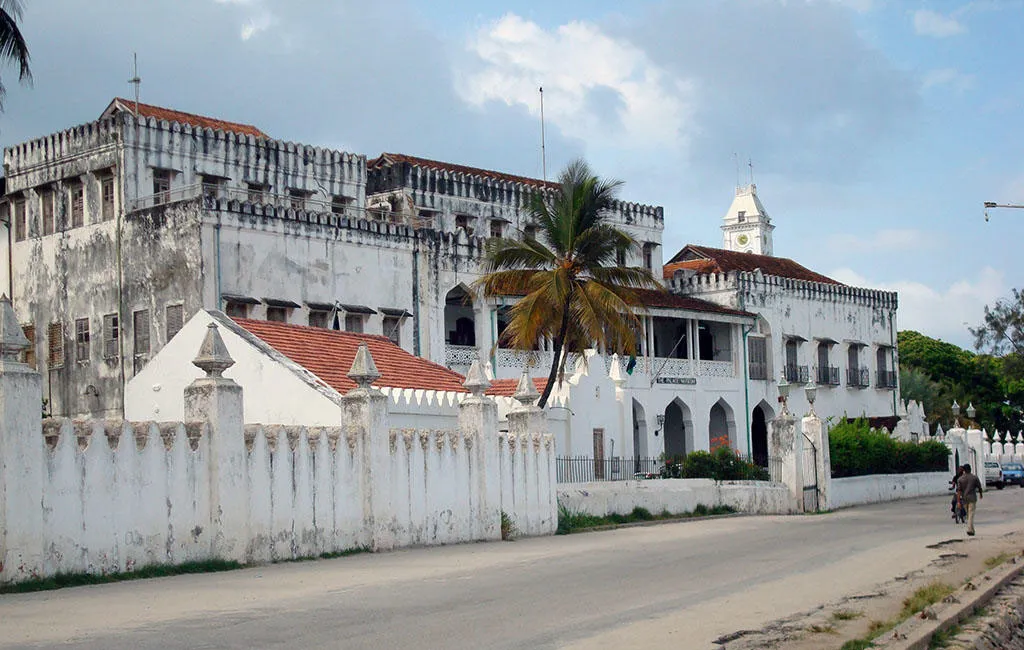
Location: Stone Town, Zanzibar.
The Sultan’s Palace Museum, located in the heart of Stone Town on Zanzibar Island, is a cultural gem that offers a glimpse into the island’s royal history and Swahili culture. Built in the late 19th century as a residence for the ruling sultans of Zanzibar, the palace later became a museum dedicated to preserving and showcasing the region’s rich heritage.
Highlights: History, artifacts, and cultural exhibits.
Visitors to the Sultan’s Palace Museum can explore its grand halls and rooms, adorned with intricate carvings, Persian rugs, and ceremonial artifacts that once belonged to the sultans. The museum’s exhibits provide a comprehensive overview of Zanzibar’s history, from its early days as a trading hub to its colonial era under Portuguese, Arab, and British rule.
Highlights include displays of royal regalia, traditional clothing, weaponry, and historical documents that chronicle Zanzibar’s socio-political evolution. The museum also features insights into Swahili culture, showcasing traditional crafts, music, and religious practices that have shaped the island’s identity over the centuries.
Located within the UNESCO World Heritage-listed Stone Town, the Sultan’s Palace Museum offers visitors a captivating journey through Zanzibar’s royal past and its enduring cultural legacy. It serves as a testament to the island’s rich history, inviting travelers to immerse themselves in the vibrant tapestry of Zanzibar’s cultural heritage.
Description: Former residence of Zanzibar’s sultans turned museum.
The Sultan’s Palace Museum in Stone Town, Zanzibar, is a historic landmark that was originally built as the residence for the sultans of Zanzibar in the late 19th century. Today, it stands as a museum dedicated to preserving and showcasing the rich heritage of Zanzibar’s royal family and Swahili culture.
Highlights: History of Zanzibar’s royal family, artifacts, cultural exhibits.
Visitors to the Sultan’s Palace Museum can explore the grandeur of the former sultan’s residence, adorned with elaborate architecture and traditional furnishings that reflect the opulence of Zanzibar’s ruling elite. The museum’s exhibits offer insights into the history of the royal family, including their roles in governance, diplomacy, and cultural patronage throughout Zanzibar’s tumultuous history.
Highlights of the museum include a collection of royal artifacts such as ceremonial regalia, weaponry, and personal belongings of the sultans. The museum also features cultural exhibits that showcase Swahili traditions, craftsmanship, and religious practices that have shaped the identity of Zanzibar’s inhabitants over centuries of cultural exchange.
Located within the UNESCO World Heritage site of Stone Town, the Sultan’s Palace Museum provides a fascinating glimpse into the socio-political and cultural dynamics that have shaped Zanzibar’s history. It offers visitors an opportunity to delve into the island’s royal past and its enduring cultural legacy, making it a must-visit destination for history enthusiasts and travelers exploring East Africa’s vibrant heritage.
Conclusion
In conclusion, Tanzania’s rich cultural and historical heritage is a tapestry woven from millennia of diverse influences and significant milestones. From the ancient civilizations of Olduvai Gorge to the colonial legacies of Stone Town and Bagamoyo, each site tells a unique story of resilience, adaptation, and cultural exchange. Exploring these historical treasures not only unveils architectural marvels and archaeological wonders but also fosters a deeper understanding of the vibrant communities that have shaped Tanzania’s identity.
Through historical tours, visitors can witness the remnants of ancient trading networks, marvel at Swahili and Arab architecture, and reflect on the impacts of colonialism and cultural assimilation. Museums like the Sultan’s Palace in Zanzibar and the Museum of Tanzanian History in Dar es Salaam provide invaluable insights into the country’s past, preserving artifacts and narratives that celebrate Tanzania’s cultural diversity and historical evolution.
As Tanzania continues to embrace its heritage while looking towards the future, these historical tours serve as bridges between the past and present, offering profound experiences that educate, inspire, and connect people across generations and continents. Whether exploring the ruins of Kilwa Kisiwani or the agricultural innovations of Engaruka, each site invites visitors to embark on a journey through time, discovering the enduring spirit and resilience of Tanzania’s people and their enduring contributions to global history.
Recap of Tanzania’s Diverse Historical Tours
Tanzania offers a diverse array of historical tours that showcase its rich cultural tapestry and profound historical significance. From the ancient archaeological sites of Olduvai Gorge and Kilwa Kisiwani to the colonial-era landmarks of Stone Town and Bagamoyo, each destination illuminates different facets of Tanzania’s past. These tours not only highlight architectural marvels and archaeological wonders but also offer insights into the cultural exchanges and socio-political developments that have shaped the region over millennia.
Importance of Preserving and Promoting Cultural Heritage through Tourism
Preserving and promoting Tanzania’s cultural heritage through tourism is crucial for several reasons. First and foremost, it fosters a sense of pride and identity among local communities by showcasing their history, traditions, and craftsmanship. Additionally, tourism revenue supports conservation efforts, ensuring that historical sites and artifacts are maintained for future generations to appreciate. Cultural tourism also promotes cross-cultural understanding and appreciation, fostering dialogue and mutual respect among visitors and locals alike.
Recommendations for Travelers Interested in Exploring Tanzania’s Rich History
For travelers keen on exploring Tanzania’s rich history, here are some recommendations:
- Plan a Diverse Itinerary: Include a mix of archaeological sites, museums, and historical towns to gain a comprehensive understanding of Tanzania’s cultural evolution.
- Engage with Local Guides: Local guides offer invaluable insights into the history, traditions, and significance of each site, enhancing the visitor experience.
- Respect Cultural Sensitivities: Be mindful of local customs, dress codes, and traditions when visiting historical sites and interacting with local communities.
- Support Sustainable Tourism Practices: Choose tour operators and accommodations that prioritize sustainable practices and contribute positively to local communities and conservation efforts.
- Immerse Yourself in Cultural Experiences: Participate in cultural activities, such as traditional dance performances, culinary tours, or craft workshops, to deepen your connection to Tanzania’s heritage.
By exploring Tanzania’s historical tours with an open mind and a respectful attitude, travelers can not only enrich their own experiences but also contribute to the preservation and celebration of Tanzania’s diverse cultural heritage for generations to come.
